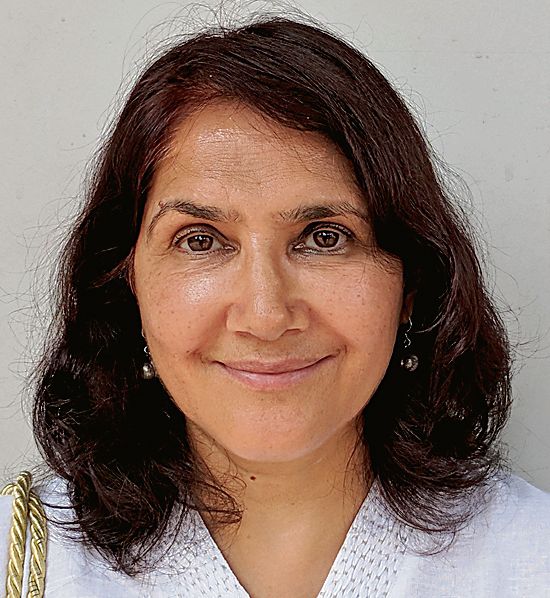The waning influence of madarsas in UP
MADraSA Bahrul Uloom in Varanasi’s Muslim area is a two-storeyed rented place with narrow dark stairs that come alive with the chatter of hundreds of boys and girls twice a day. The morning shift is for students of kindergarten to Class VIII. Due to a shortage of space, senior students of classes IX and X come in the afternoon.
The madarsa does not have a playground, so the morning prayer in Arabic is recited by a group of girls on the mike in the Principal’s office; it plays on speakers in the classrooms.
With 1,200 students and about 40 teachers on its rolls, this madarsa, like hundreds of other such schools in Uttar Pradesh, let out a sigh of relief when earlier this month, the Supreme Court (SC) upheld the constitutional validity of the Uttar Pradesh Board of Madarsa Education Act, 2004, which provides the framework for their functioning.
In March, the Allahabad High Court had struck down the Act, saying that it violated the principles of secularism wherein the State must not identify with or favour any particular religion. The HC ruling had come like a death knell for the 16,000-odd madarsas of Uttar Pradesh, leading to much consternation in the Muslim community.
However, the SC has held that minority institutions like madarsas have the right to provide religious education and manage their own administration, but they must not compromise on quality education. The latter part is the kicker. As the matter played out in the courts, shortcomings in the standard of education provided in madarsas began to be revealed.
The legal focus on the lack of quality education in madarsas has served to intensify a growing sentiment within the community that if the madarsa system is to survive and provide some religious teaching to Muslim students, modernising their curriculum is the only way forward.
The pressure to do so is not only from the court and the government; the community itself is forcing the hand of the clergy that has resisted the introduction of modern education in madarsas, fearing that it would lead to compromised Muslims.
More and more Muslim parents are shunning neighbourhood madarsa and opting to send their wards to regular schools. Most drop out after Class V and join mainstream education.
“It’s a worrying situation,” admits Abdul Batin Nomani, the Mufti of Varanasi. Which is why there is a scramble among madarsa managements to modernise their curriculum. Most of the recognised ones are already teaching subjects like science, math, social sciences and computer science from NCERT books in addition to the study of the Koran.
But everyone knows that those who pass out from a madarsa find it difficult to gain employment because the madarsa board certificate is of little value in the job market.
Mohammed Sohail Ansari, after doing MSc in mathematics from a recognised university, runs a flourishing coaching institute for science and math students. The madarsa that he studied in till Class V has since shut down “due to lack of students.”
Some 500 madarsas in UP have applied for de-recognition as they are shutting down, mainly because of the high dropout rate and lack of funding.
“Nowadays, mostly Pasmanda — economically and socially backward Muslims — send their children to madarsas because they are either free of cost or charge nominal fees,” says Ayaz Ahmed Qasmi. He is on a mission to modernise his An Noor Madarsa in Peeli Kothi.
Bowing to parental pressure, some madarsa managements run their institutions like a regular school and send the students for religious teachings in the evening to ‘maktabs’ in the masjids.
A recent report titled “The State of Muslim Education in India’ by Arun C Mehta, former professor at the National Institute of Educational Planning and Administration, revealed that only about 20 lakh students were enrolled in madarsas in the academic year 2022-23 as against 6.67 crore Muslim students enrolled in regular upper primary schools. This means that only four per cent of the Muslim students head to madarsas nowadays and roughly half of them drop out.
In Uttar Pradesh, the number of students registering for secondary and senior secondary classes in madarsas has declined by more than three lakh in the last seven years. Those who do stay and pass out look for employment as imams in mosques. The girls head to the marriage market because, even now, a madarsa-educated girl is valued in Muslim households in the hope that she can pass on the principles and teachings of Islam to her children.
The disenchantment of students with the secondary education offered by madarsas is mostly because the mainstream subjects are taught only till Class VIII. From Class IX onwards, students can opt for only one mainstream subject, like math, social science, philosophy or traditional medicine, and devote the rest of the time to an intensive study of religious teachings. As a result, large numbers of students have moved to regular schools, where Muslim enrolment has increased by 50 lakh in the 10-year period from 2012-13 to 2021-22.
Next are the higher educational degrees — Qamil (undergraduate) and Fazil (postgraduate) — conferred by the madarsas. These degrees do not have equivalence with any mainstream educational degree. They have been declared as unconstitutional by the apex court. Fazil and Qamil degree holders can only head to theological establishments and not the mainstream job market on the basis of these degrees.
The thinking within the Muslim clergy is that when a madarsa comes under government recognition and is forced to teach mainstream subjects, ‘Din’ (the Muslim way of life) goes out of the window. The study of ‘Din’ and the Koran is absolutely important in the journey to becoming a good Muslim.
The only problem is that the Muslim youth don’t seem to be in sync with this view and are charting their own courses.









